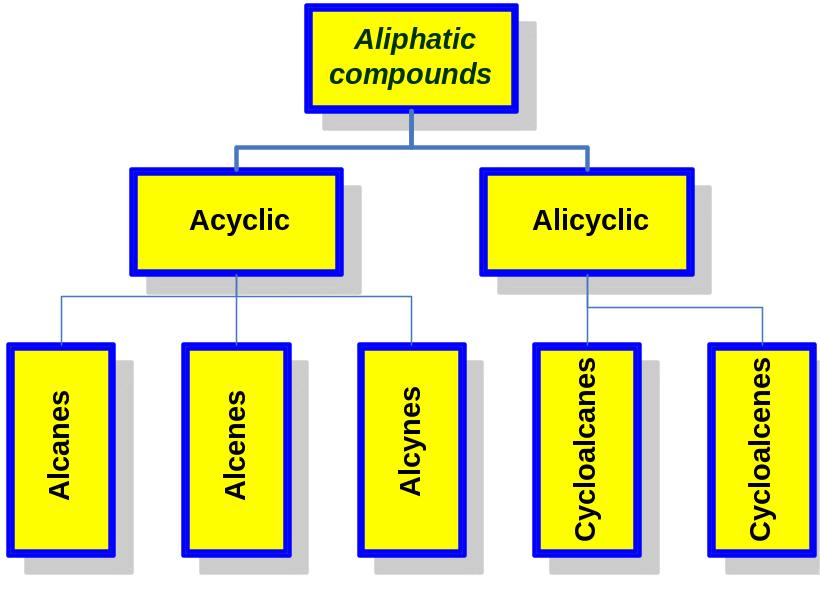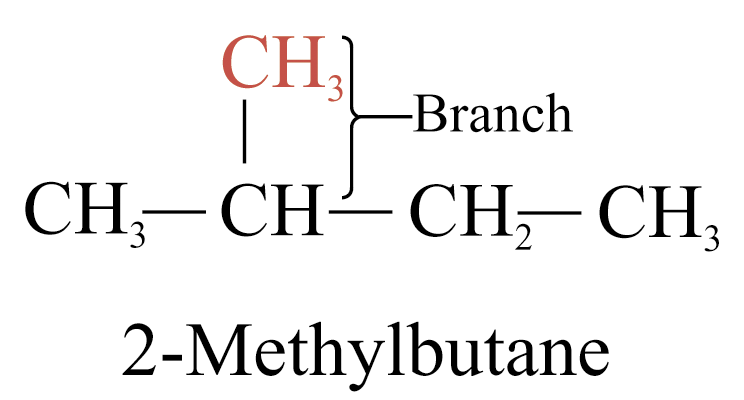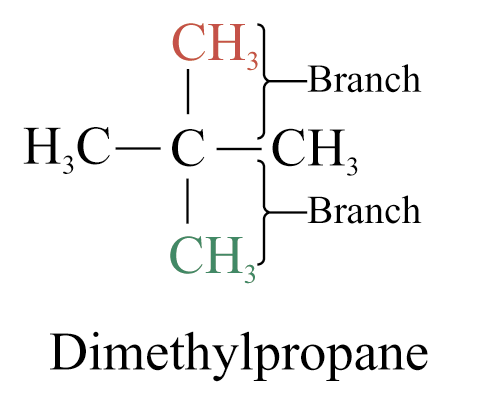
- •1 Alkanes
- •1.1 Nomenclature of Alkanes
- •1.2 Physical Properties of Alkanes
- •1.3 Preparation of Alkanes
- •Industrially Preparation
- •1.4 Reactions of Alkanes
- •3. Chain termination
- •1.5 Cycloalkanes
- •1.6 Nomenclature of Cycloalkanes
- •1.7 Isomerization of Cycloalkanes
- •1.8 Reactions of Cycloalkanes
- •2 Alkenes
- •2.1 Nomenclature of Alkenes
- •2.2 Physical Properties of Alkenes
- •2.3 Preparation of Alkenes
- •2.4 Reactions of Alkenes
Lecture 4
Aliphatic compounds (1)
Alkanes
Alkenes
Classification of aliphatic compounds

1 Alkanes
Alkanes are a class of saturated hydrocarbons with the general formula CnH2n+2, where n is any integer. Hydrocarbons because they contain only carbon and hydrogen and no functional groups. Saturated because they have only C-C or C-H single bonds and thus contain the maximum possible number of hydrogens per carbon.
They can be either straight-chain (normal alkanes) or branched.
Alkanes are relatively inert
A
 ll
carbon atoms are sp3-hybridized.
All
bond angles are 109.5°
ll
carbon atoms are sp3-hybridized.
All
bond angles are 109.5°
The term “straight chain” is somehow misleading. The carbon chain is actually zigzag in shape.
Branched-chain alkane is the molecule with carbon atoms present in more than one continuous carbon chain


1.1 Nomenclature of Alkanes
Straight-Chain Alkanes
Name |
Number of carbon atoms |
Structure |
Methane Ethane Propane Butane Pentane Hexane Heptane Octane Nonane Decane |
1 2 3 4 5 6 7 8 9 10 |
CH4 CH3CH3 CH3CH2CH3 CH3(CH2)2CH3 CH3(CH2)3CH3 CH3(CH2)4CH3 CH3(CH2)5CH3 CH3(CH2)6CH3 CH3(CH2)7CH3 CH3(CH2)8CH3 |
Branched-Chain Alkanes
1. Select the longest possible straight chain; this gives the parent name for the alkane
2. Number the parent chain beginning with the end of the chain nearer the branched chain
3. Use the number obtained by application of rule 2 to designate the position of the branched chain
4. When two or more branched chains are present, give each branched chain a number corresponding to its position on the parent chain
5. When two or more branched chains are identical, indicate this by the use of the prefixes ‘di-’, ‘tri-’, ‘tetra-’, and so on.
e.g.

1.2 Physical Properties of Alkanes
Number of carbon atom(s) |
Straight-chain alkane |
Boiling point (°C) |
Melting point (°C) |
Density at 20°C (g cm–3) |
1 2 3 4 5 6 7 8 9 10 |
Methane Ethane Propane Butane Pentane Hexane Heptane Octane Nonane Decane |
–161 –89 –42 0 36 69 98 126 151 174 |
–183 –172 –188 –135 –130 –95 –91 –57 –54 –30 |
— — — — 0.626 0.657 0.684 0.703 0.718 0.730 |
Boiling Point
Higher members have higher boiling points
Reason:
Increase in molecular mass
Increase in intermolecular force
B ranched-chain
alkanes have lower boiling points than straight-chain alkanes
ranched-chain
alkanes have lower boiling points than straight-chain alkanes
∵ molecule is more compact Þ surface area ¯ Þ van der Waals’ force ¯ Þ boiling point ¯
Melting Point
Higher members have higher melting points
Reason:
Increase in molecular mass
Increase in intermolecular force
Density
All alkanes and cycloalkanes have densities less than 1 g cm–3 at 20°C.
Þ Petroleum floats on water surface
Solubility
Alkanes non-polar compounds
insoluble in water and highly polar solvents
soluble in non-polar solvents like benzene, 1,1,1-trichloroethane
